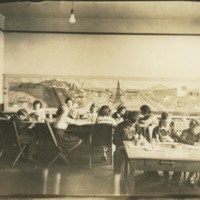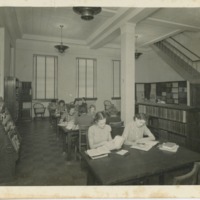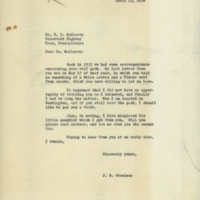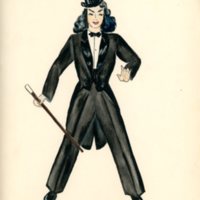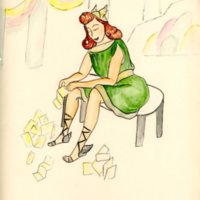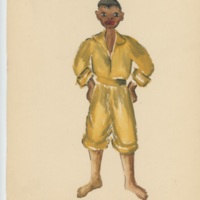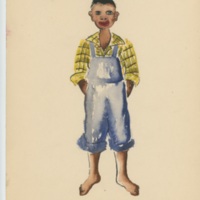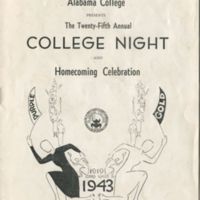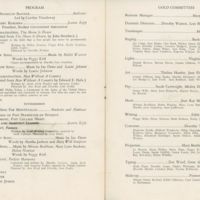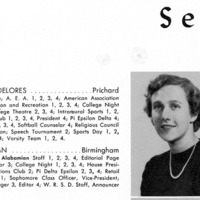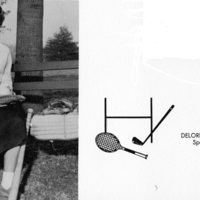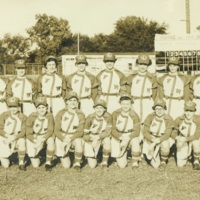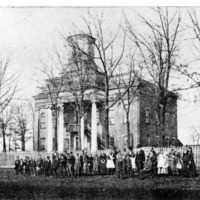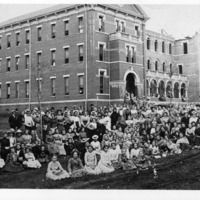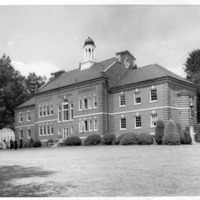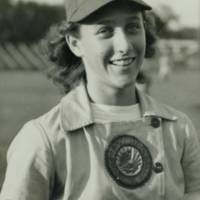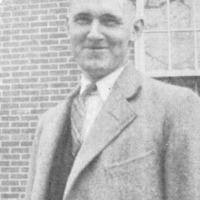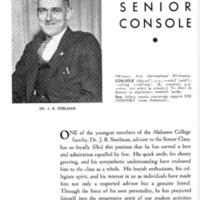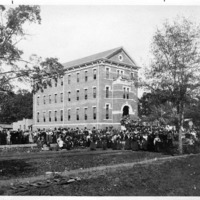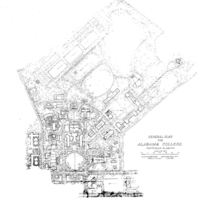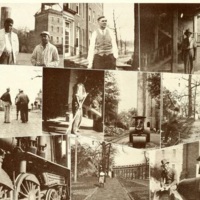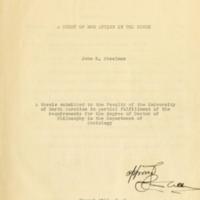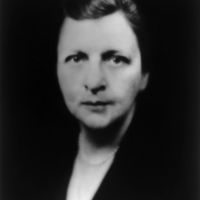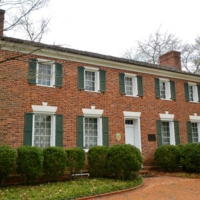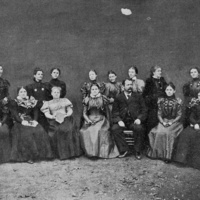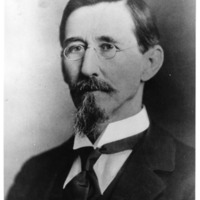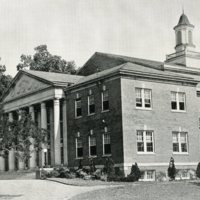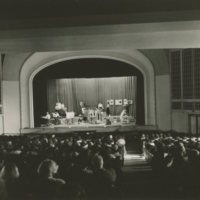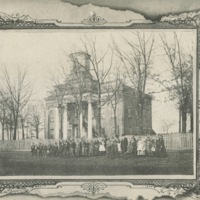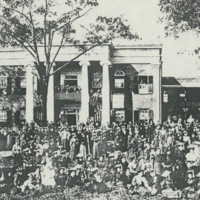Browse Items (119 total)
Sort by:
Jeter Hall
This photo depicts a 1938 art class receiving instruction in clay modeling. Jeter hall was built in 1915 as an elementary school. It contained six classrooms, an auditorium, a music room, two storage rooms, a cafeteria, and one toilet. It functioned…
Wills Hall
Photograph of Wills Hall which served as the campus library at the University of Montevallo from 1923-1968. During the 1940s, Alabama College, the state college for women, was a four-year degree-granting institution for women. Wills Hall was built in…
John R. Steelman letter to McCleery
A letter from John Steelman to Dr. E. H. McCleery concerning wolves. John Steelman corresponded with various people in the early thirties about wolves, McCleery being one of them. Steelman asked if Mcleery still had any wolves and indicated an…
Tags: John R. Steelman, wolves
Mr. Pluto - Purple Stunt Character
In 1945, the Homecoming tradition included a Stunt (comedy) and a Dramatization (drama) skit. For 1945 the Purple Stunt was called "Speak of the Devil" or "Ye Gods!", and was written by The Purple Writing Committee. Since Alabama College was still a…
Tags: 1945, Alabama College, College Night, Purple Side, Purple Stunt
Mercury - Purple Stunt Character
In 1945, the Homecoming tradition included a stunt (comedy) and a dramatization (drama) skit. For 1945 the Purple stunt was called "Speak of the Devil" or "Ye Gods!", and was written by The Purple Writing Committee. In the play, Mr. Pluto tries to…
Tags: 1945, Alabama College, College Night, Purple Side, Purple Stunt
Gen'l Stonewall Bunker Hill - Gold Side Character Sketch
This costume sketch comes from the dramatization “Lay Down dat Chicken Boy” by the gold side in 1943. The name of this character comes from both General Stonewall Jackson and the Battle of Bunker Hill. This character reflects the influence of…
Franklin D. Roosevelt Johnson - Gold Side Character Sketch
This costume sketch comes from the dramatization “Lay Down dat Chicken Boy” by the gold side in 1943. The name of this character comes from US president Franklin D. Roosevelt. The costume and character obviously play on racial stereotypes and the…
1943 College Night Program Cover and Greetings
World War Two affected College Night and the Alabama College campus in general. The greeting on the first page of the program for the 1943 College Night discussed the importance of celebrating the art of peace during a time of war.
Tags: 1943, Alabama College, College Night, Wartime
Yearbook Photo
At Alabama College Dolly was active in campus life, participating in College Night, a Speech Tournament, and the Pi Epsilon Delta sorority. Unsurprisingly, she served as the softball team counselor. The yearbook misspelled her surname"Brunfield".
Tags: Dolly White, Senior Year
Fort Wayne Daisies
In her final year as a professional baseball player Dolly batted .332 in 211 at bats over 66 games. Remarkably, she drew 51 walks, scored 48 runs, and struck out just 15 times. By the end of her professional career Brumfield had matured into a very…
Red Bricks
The University of Montevallo's red brick streets are not as new as some people might think. The impetus for this change came from the Olmsted Brothers, a landscape architect firm, that recommended brick streets in 1930 as a way to unify the entire…
Tags: Montevallo, Montevallo General Plan, Red Bricks, Sidewalks, WPA
Frances Perkins
Frances Caroline Perkins was the United States Secretary of Labor from 1933 to 1945. A tireless advocate for the country's working class, she helped Franklin Delano Roosevelt bring the labor movement into the New Deal coalition. John Steelman invited…
King House
The oldest structure on campus is King House, built in 1823 by a Virginian planter named Edmund King who owned a large portion of land in Montevallo. King’s slaves used clay from the nearby river to make the bricks while imported glass windows…
Tags: Andrew Jackson, Edmund King, King House, Montevallo
President Reynolds with his Faculty
The Alabama Girls’ Industrial School opened in 1896 with a faculty of six (five women and one man) and a student body of 145. During Reynolds' three years as president, he acquired 25,000 acres of public land from Congress and built the first…
Captain Henry Reynolds
Henry Clay Reynolds, first president of the Alabama Girls’ Industrial School, was not an educator, but rather an enthusiastic advocate for public education. A businessman and town notable, Reynolds lobbied for the state to build a school for girls in…
Palmer Hall
Constructed in 1929, Thomas Waverly Palmer Hall (named after the university's third president) serves a variety of functions. It houses several of the University of Montevallo's administrative offices, most notably the registrar's office, and is…
W. H. Trumbauer: The College Night Ghost
Like many other buildings on the University of Montevallo's campus, Palmer Hall is said to be inhabited by a ghost. The ghost in question would be that of Dr. William H. Trumbauer, an ardent supporter of the school's theater department and one of the…
Female Academy
This photo display the building now known as Reynolds Hall with a collection of townspeople standing in front of it. The building was one of two constructed in 1851 for the Montevallo Male Insitute. Not long after their construction, Reynolds Hall…
Reynolds, 1920
This photo displays students of Alabama College, now known as The University of Montevallo, convened in front of Reynold’s Hall as it existed in 1920. From the very start of Alabama College, Reynolds Hall was affectionately known as The Chapel. Until…
